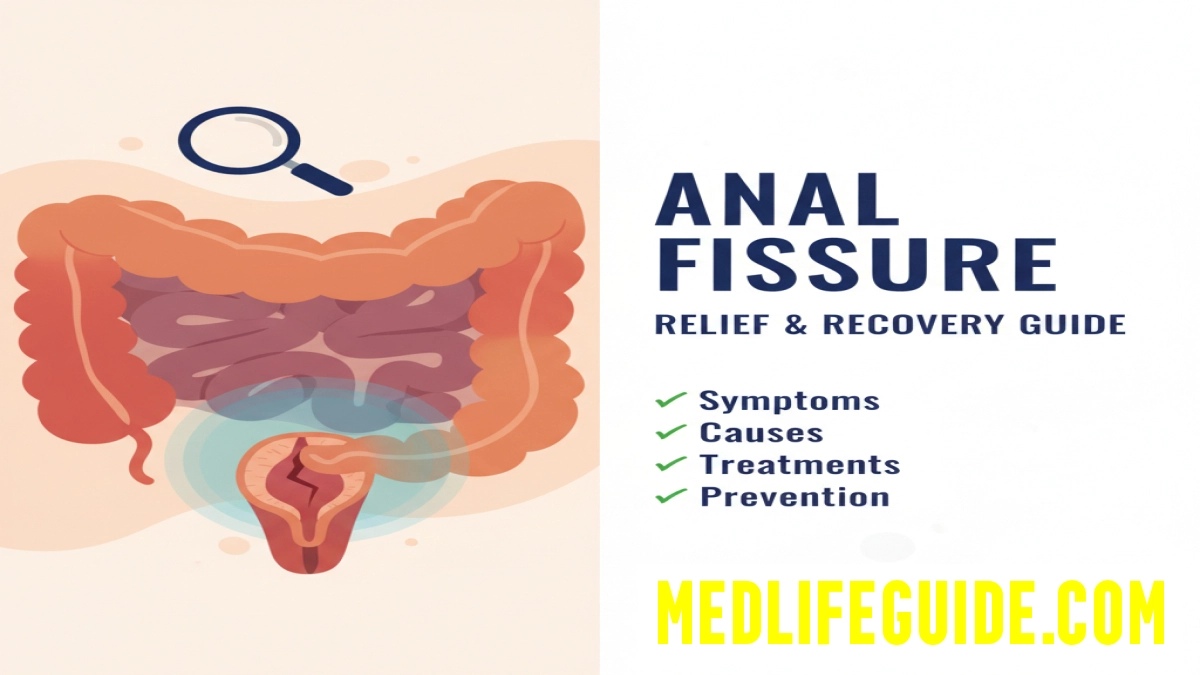Anal fissures, though often a sensitive and private health concern, affect a significant portion of the population at some point in their lives. Despite their prevalence, many individuals suffer in silence due to embarrassment or lack of clear information. This article aims to demystify this condition by providing a deeply researched, expert-driven, and empathetic exploration of its causes, symptoms, and treatment options. By integrating clinical insights with practical advice, this guide serves as a definitive resource for those seeking relief and understanding.
What Is an Anal Fissure?
An anal fissure is a small tear or crack in the lining of the anus, the opening through which stool exits the body. This tear can cause sharp pain during and after bowel movements, often accompanied by bleeding. While the fissure itself is a minor injury, the discomfort it causes can significantly impact quality of life.
Why Do Anal Fissures Occur?
The primary cause of these tears is trauma to the anal canal, often due to passing hard or large stools. However, other factors contribute, including:
- Chronic constipation or diarrhea
- Straining during bowel movements
- Childbirth-related trauma
- Inflammatory conditions such as Crohn’s disease
- Poor blood flow to the anal region
Understanding these underlying causes is crucial for effective management and prevention.
Recognizing the Symptoms: What to Watch For
Early recognition of symptoms can lead to prompt treatment and faster healing. Common signs include:
- Intense pain during bowel movements, sometimes described as passing glass shards
- Bright red blood on toilet paper or stool surface
- Itching or irritation around the anus
- A visible crack or tear near the anal opening
- A small lump or skin tag near the fissure, often called a sentinel pile
When to Seek Medical Advice
While many fissures heal with conservative care, persistent symptoms lasting more than six weeks warrant professional evaluation. Chronic fissures may require specialized treatment to prevent complications.
Diagnostic Approach: How Professionals Confirm the Condition
Diagnosis typically involves a physical examination by a healthcare provider. In some cases, gentle inspection with an anoscope (a small tube with a light) may be necessary. For patients with underlying inflammatory diseases or atypical presentations, further investigations such as colonoscopy might be recommended.
Treatment Strategies: From Home Remedies to Medical Interventions
Conservative Management
Most acute fissures respond well to non-invasive treatments aimed at reducing pain and promoting healing:
- Dietary Adjustments: Increasing fiber intake and hydration to soften stools and reduce straining.
- Sitz Baths: Warm water baths several times daily to relax the anal sphincter and improve blood flow.
- Topical Agents: Application of anesthetic creams or nitroglycerin ointment to relieve pain and promote muscle relaxation.
- Stool Softeners: Over-the-counter options to ease bowel movements.
When Conservative Measures Aren’t Enough
Chronic or non-healing fissures may require more advanced therapies:
- Botulinum Toxin (Botox) Injections: Temporarily paralyzes the anal sphincter muscle to reduce spasm and facilitate healing.
- Surgical Options: Lateral internal sphincterotomy, a procedure to cut a small portion of the sphincter muscle, is considered the gold standard for refractory cases.
Preventive Measures: Long-Term Strategies for Anal Health
Prevention focuses on maintaining soft stools and minimizing trauma:
- Maintain a balanced diet rich in fiber (fruits, vegetables, whole grains).
- Stay well-hydrated throughout the day.
- Avoid prolonged sitting on the toilet.
- Practice good anal hygiene without excessive wiping or use of harsh soaps.
- Manage underlying conditions such as constipation or inflammatory bowel disease proactively.
Addressing Common Concerns and Misconceptions
Is Surgery Always Necessary?
No. The majority of cases resolve with conservative care. Surgery is reserved for persistent fissures that do not respond to other treatments.
Can Stress Cause or Worsen the Condition?
While stress itself does not cause fissures, it can exacerbate bowel habits and muscle tension, indirectly contributing to symptoms.
Are There Risks of Recurrence?
Yes, fissures can recur, especially if preventive measures are not followed. Ongoing attention to bowel habits is essential.
Integrating Expert Insights and Patient Experiences
To deepen understanding, incorporating expert commentary from colorectal specialists and sharing anonymized patient stories can provide valuable perspectives. For example, a colorectal surgeon might emphasize the importance of early intervention, while patients can offer practical tips on managing discomfort and lifestyle adjustments.
Actionable Takeaways for Readers
- Prioritize a fiber-rich diet and adequate hydration to maintain soft stools.
- Use warm sitz baths regularly to soothe symptoms.
- Avoid straining and prolonged toilet sitting.
- Seek medical advice if pain or bleeding persists beyond a few weeks.
- Understand that effective treatments exist, ranging from topical therapies to minimally invasive procedures.
Conclusion: Empowering Through Knowledge and Compassion
Anal fissures, while uncomfortable and sometimes distressing, are manageable with the right approach. By combining expert knowledge, practical advice, and empathetic understanding, individuals can navigate this condition confidently and reclaim their well-being. Remember, early recognition and appropriate care are key to healing and prevention.

